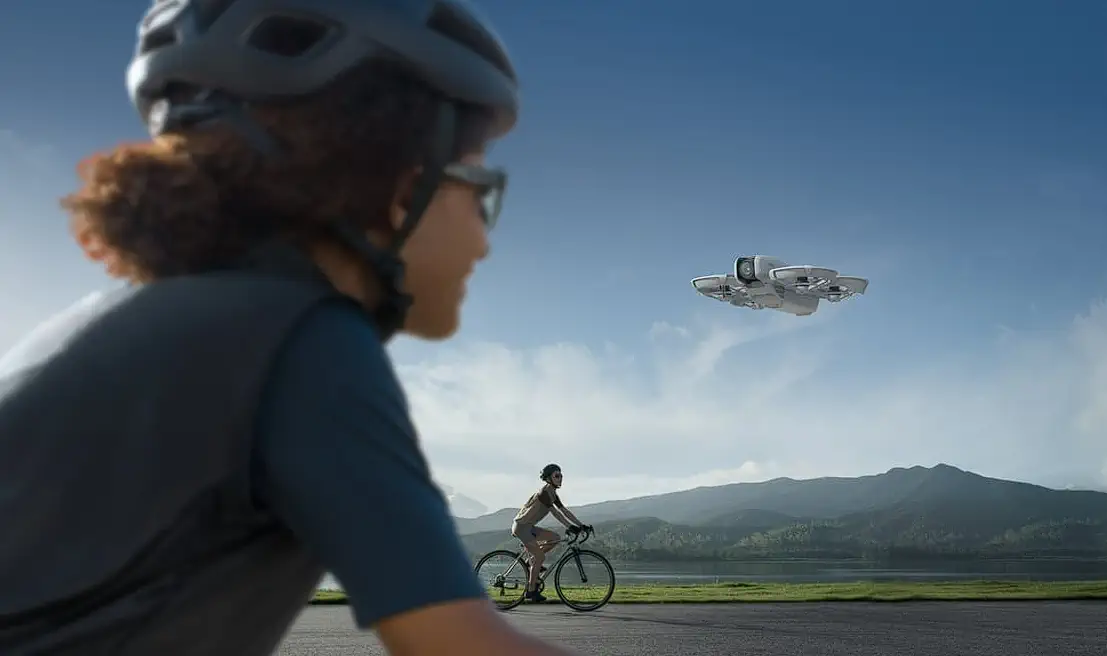DJI, the global leader in civilian drones and innovative camera technology, today announces the DJI Neo, which at just 135g1, is the company’s lightest and most compact drone to date. The drone can be fully controlled without a remote control, launched and landed on the palm1, features AI subject tracking, QuickShots, and offers 4K ultra-stabilized video with a flight time of up to 18 minutes1. Whether flown indoor or out, full-coverage propeller guards give users the safest experience possible when recording their day-to-day adventures of themselves or having fun in a group with friends.
“At DJI we are always studying everyday camera use so that we can help people capture their videos and photos in the most convenient way possible. The DJI Neo strives to give people the latest tech in the smallest form factor so that they can capture their daily lives, saved as treasured memories, safely and with ease,” said Ferdinand Wolf, Creative Director at DJI.
Into the Air at the Press of a Button
By simply pressing the drone’s mode button and selecting the desired shooting mode, Neo automatically does the rest without the need for a remote control. After snapping 12MP stills with its 1/2-inch image sensor or using DJI’s powerful stabilization algorithms to produce 4K UHD stabilized videos straight out of the camera at 4K/30fps1, the drone will return to the user’s palm.
Tell Your Story with AI Subject Tracking
Neo’s AI algorithms have been created to follow the subject within the frame. Whether cycling, skateboarding or hiking, captivating follow shots are created with ease. Additional creativity can be achieved by taking advantage of Neo’s QuickShots, which has six intelligent shooting modes1, offering a range of different recording angles.
Dronie: The drone flies backward and ascends, with the camera locked on the subject, and records a video.
Circle: The drone circles around the subject.
Rocket: The drone ascends with the camera pointing downward.
Spotlight: The drone rotates while keeping the object of interest within the frame
Helix: The drone ascends and spirals around the subject.
Boomerang: The drone flies around the subject in an oval path, ascending as it flies away from its starting point and descending as it flies back. The aircraft’s starting point forms one end of the oval’s long axis, while the other end is at the subject’s opposite side from the starting point.
Control it Your Way
The DJI Neo has been designed to be operated without an additional remote control, however, it can also be paired with the DJI Fly app, remote controllers, RC Motion, DJI Goggles, and even voice operated1, for increased flight and camera control.
A Wi-Fi connection to smartphones enables Neo to be controlled using virtual joysticks on the DJI Fly app interface with a control range of up to 50 meters1. The app also allows the tracking angle and distance to be set, giving extra freedom to shoot from afar or up close.
When combined with the DJI RC-N3, DJI Neo can achieve a maximum video transmission distance of 10 kilometers1 and offers the opportunity to flexibly operate the camera using traditional RC control sticks to capture professional level shots.
For those looking for an immersive drone experience, DJI Neo can be paired with DJI Goggles 3, RC Motion 3, or FPV Remote Controller 3. When used with RC Motion 3, DJI Neo masters the art of one-press aerobatics, seamless indoor navigation and can be maneuvered through tight spaces with ease.
Stabilization as Standard
DJI Neo is equipped with a single-axis mechanical gimbal and is capable of handling high-speed or flights with lots of maneuvers, as well as up to Level-4 wind conditions. When combined with RockSteady or HorizonBalancing stabilization, overall image shake is significantly reduced and horizon tilt is corrected within ±45°1, for smooth and stable footage that maintains clarity in both highlight and shadow areas.
Using an infrared and monocular vision positioning system, DJI Neo can hover steadily in the air, maintaining stability even in wind conditions up to Level 4. It also supports automatic Return to Home (RTH) for convenient, worry-free operation.
Everyday Content Capture Made Easy
With 22GB internal storage, Neo can save up to 40 minutes of 4K/30fps video or 55 minutes of 1080p/60fps video. Once saved, no extra data cables are needed to transfer the footage; connecting to a phone by Wi-Fi will quickly transfer it to the DJI Fly App enabling smooth post production and sharing.
Audio can also easily be recorded by connecting Neo to a smartphone. A simple tap of the audio record button on the DJI Fly app will start recording through the phone’s built-in microphone. For those looking for additional audio quality, the DJI Mic 2 can be used via a Bluetooth connection. The app automatically eliminates propeller noise and merges the audio track with the footage, ensuring clear sound even when shooting low-angle vlogs.
The DJI Fly app offers a vast selection of templates, sound and image effects, for quick and easy editing. Create and share videos efficiently without needing to download the footage to edit, saving storage space on the phone.
Connect the aircraft directly to a power source using a Type-C data cable for convenient charging. Additionally, DJI Neo’s Two-Way Charging Hub can charge three batteries simultaneously1, increasing both charging speed and efficiency.
Neo’s Offline Debut Happening at IFA, 6-10 September, 2024
Be among the first to experience DJI’s groundbreaking new palm-sized drone for vlogs, at this year’s IFA, Germany. The drone will be available to try out for all visitors to DJI’s booth (Hall 17-110) from 6th-10th September.
1All data was measured using a production model of DJI Neo in a controlled environment.
Discover more from sUAS News
Subscribe to get the latest posts sent to your email.

